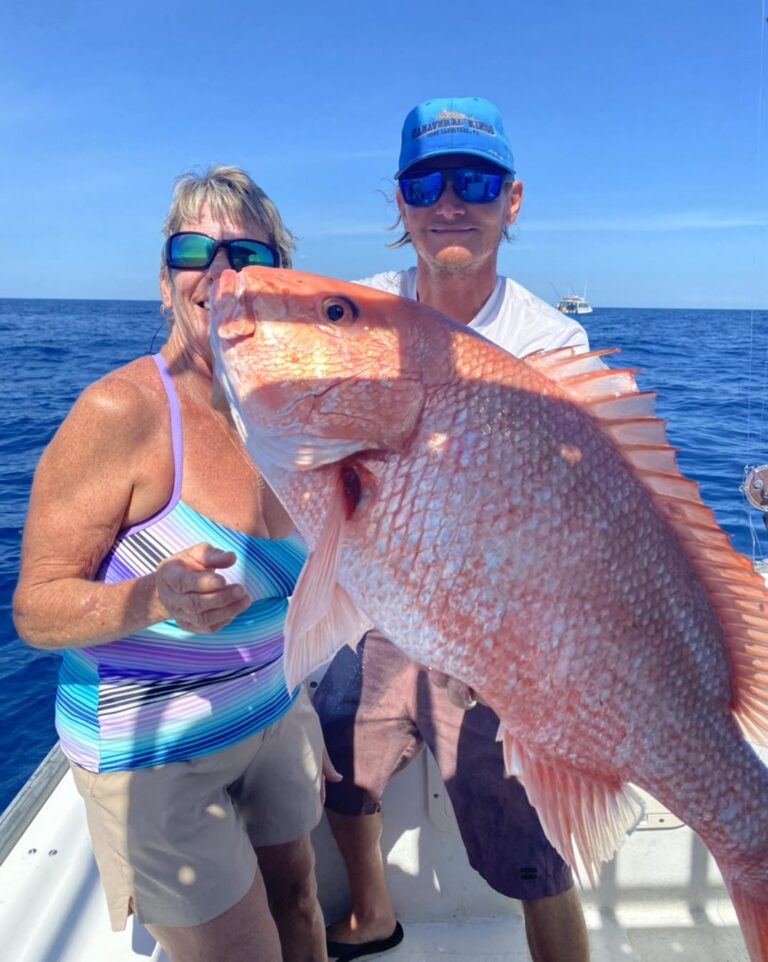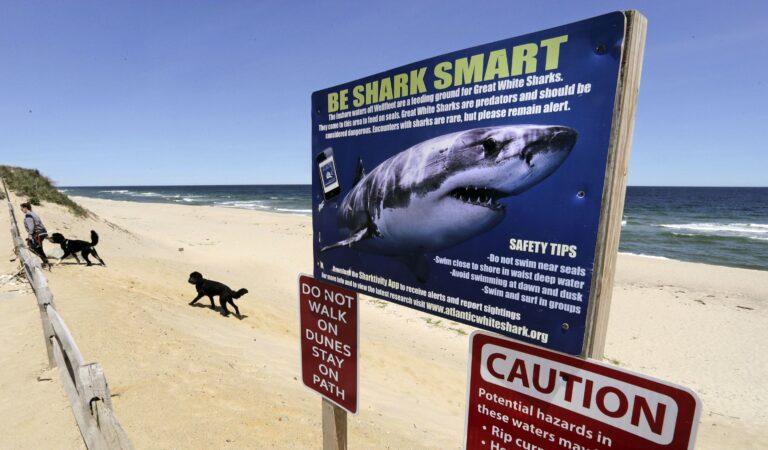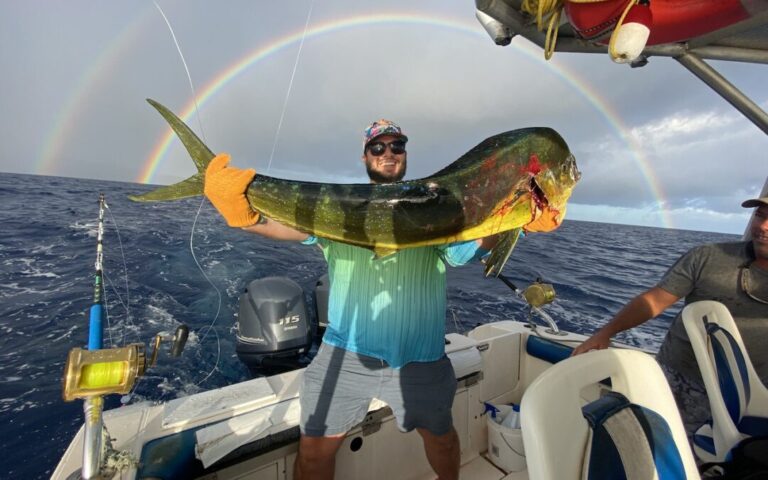To catch tuna on a deep sea fishing trip, use live bait such as squid or anchovies and troll at a high speed. Planning a deep sea fishing trip and hoping to reel in some tuna?
Tuna fishing is an exciting and rewarding experience, but it requires the right techniques and strategies to be successful. In this guide, we will share some tips and tricks to help you catch tuna on your next deep sea fishing adventure.
By using live bait, such as squid or anchovies, and trolling at a high speed, you can increase your chances of hooking a tuna. So grab your fishing gear and get ready for an unforgettable tuna fishing trip!

Credit: nypost.com
Preparing For The Ultimate Fishing Experience
Deep sea fishing for tuna is an exhilarating and rewarding experience that requires careful preparation. Whether you’re a seasoned angler or a beginner, there are several key factors to consider before embarking on your deep sea fishing trip. We will explore the essential aspects of preparing for the ultimate fishing experience, including choosing the right equipment, researching the best locations, and securing the proper licenses.
Choosing The Right Equipment
When it comes to catching tuna on a deep sea fishing trip, having the right equipment can make all the difference. Here are some key points to keep in mind when selecting your gear:
- Rod and reel: Opt for a heavy-duty rod and reel combo specifically designed for saltwater fishing. Look for a sturdy construction and a high line capacity to handle the strength and size of tuna.
- Fishing line: Tuna are powerful creatures, so it’s crucial to choose a strong and durable fishing line. Braided lines with a high pound-test rating are ideal for withstanding the aggressive fights of these mighty fish.
- Terminal tackle: Use heavy-duty swivels, hooks, and leaders that can handle the strength and sharp teeth of tuna. Circle hooks are often recommended to increase the chances of a successful hook-up and minimize harm to the fish.
- Lures and baits: Depending on the fishing technique you plan to use, stock up on a variety of lures and baits. Tuna are known to be attracted to shiny objects, so consider including jigs, feathers, and squid imitations in your tackle box.
Researching The Best Locations
To increase your chances of a successful tuna catch, thorough research on the best fishing locations is essential. Here’s what you need to know:
- Migration patterns: Tuna are migratory fish, and their patterns can vary depending on the time of year. Research their migration routes to determine the best locations to find them during specific seasons.
- Local knowledge: Seek advice from local fishing communities, charter captains, or fishing forums to gain insights into the most productive fishing grounds. They can provide valuable information about the best times to go, secret spots, and specific techniques that work well in the area.
- Ocean conditions: Pay attention to water temperature, currents, and weather conditions in your desired fishing location. Tuna are more likely to be active in areas with optimal conditions for feeding, so plan your trip accordingly.
Securing The Proper Licenses
Before setting off on your deep sea fishing adventure, it is crucial to obtain the necessary licenses and permits. Here’s what you need to do:
- Research fishing regulations: Different regions have specific fishing regulations and bag limits for tuna. Make sure you familiarize yourself with these rules to ensure compliance and contribute to sustainable fishing practices.
- Obtain fishing permits: Contact the relevant authorities or visit their website to apply for the required fishing permits. These permits may include a saltwater fishing license, a specific tuna fishing license, or a charter boat fishing permit.
- Follow catch reporting requirements: Some jurisdictions may require anglers to report their catch to aid in research and conservation efforts. Stay informed about the reporting requirements and submit your catch data accordingly.
By following these key steps in preparing for the ultimate tuna fishing experience, you’ll be well-equipped to embark on an exciting and successful deep sea fishing trip. Remember to prioritize safety, respect the environment, and enjoy the adventure that awaits you!
Mastering The Art Of Deep Sea Fishing
Deep sea fishing is an exciting sport that requires skill and knowledge. If you’re planning a tuna fishing trip, it’s essential to understand the behavior and feeding patterns of these elusive predators. In this section, we will delve into the key aspects of mastering the art of deep sea fishing, including understanding tuna behavior and feeding patterns, perfecting casting techniques, and utilizing effective bait and lures.
Understanding Tuna Behavior And Feeding Patterns
To increase your chances of catching tuna on your deep sea fishing trip, it’s crucial to have a good understanding of their behavior and feeding patterns. Here are some key points to keep in mind:
- Tuna are highly migratory fish and are known for their speed and agility in the water.
- They often travel in schools, so it’s important to locate areas where they are likely to gather.
- Tuna are opportunistic feeders and are attracted to areas with plenty of food, such as baitfish and squid.
- They are most active during low light conditions, such as early morning or dusk.
- Tuna swim at various depths, so it’s essential to use techniques that allow you to target them at the right depth.
Perfecting Casting Techniques
Having the right casting technique is essential for successful tuna fishing. Here are some tips to help you perfect your casting skills:
- Use a heavy-duty fishing rod and reel that can handle the weight and strength of tuna.
- Practice casting in different conditions to improve your accuracy and distance.
- Aim to cast your line near baitfish schools or areas where tuna are likely to be feeding.
- Avoid making loud noises or sudden movements that could scare away the fish.
- When casting, keep your wrist firm and use a smooth, fluid motion to release the line.
Utilizing Effective Bait And Lures
Choosing the right bait and lures can make a significant difference in your tuna fishing success. Consider the following points when selecting your fishing gear:
- Live bait, such as mackerel or sardines, can be highly effective in attracting tuna.
- Artificial lures that mimic the appearance and movement of baitfish can also be successful.
- Experiment with different colors, sizes, and patterns to see what works best on your fishing trip.
- Attach bait or lures securely to your line to prevent them from getting lost during a fight with a tuna.
- Pay attention to the depth at which tuna are feeding and adjust your bait or lure accordingly.
Mastering the art of deep sea fishing takes time and practice, but the rewards are well worth it. By understanding tuna behavior and feeding patterns, perfecting your casting techniques, and utilizing effective bait and lures, you can significantly increase your chances of catching tuna on your next fishing adventure.
So, get out there, enjoy the open waters, and reel in that prized tuna!
Techniques For Successfully Landing Monster Tuna
Starting a deep sea fishing trip with the hope of catching a monster tuna can be an exhilarating experience. These massive fish have a reputation for their strength and fighting ability, making them a thrilling challenge for any angler. However, successfully landing a tuna requires a combination of skill, technique, and patience.
In this section, we will discuss the key techniques for effectively catching and landing monster tuna.
Playing The Waiting Game – Patience Is Key:
- Be prepared to spend a considerable amount of time waiting for a tuna to strike. Tuna are known for their elusive nature, and it can take hours before you get a bite.
- Use your intuition and pay attention to the signs. Look for diving birds, schools of baitfish, or floating debris, as these can indicate the presence of tuna.
- Stay calm and avoid constantly reeling in and casting out your line. Allow the bait to attract the tuna and be patient – sometimes, the best action is no action.
- Vary your depths and try fishing at different levels in the water column to increase your chances of encountering tuna.
- Keep an eye on your surroundings and be ready to act quickly when the moment arrives. Having your equipment and gear organized and easily accessible will help you react swiftly.
Fighting The Tuna – Tips For A Successful Battle:
- When you feel a tuna taking the bait, ensure you have a solid grip on the rod and brace yourself for the intense fight that lies ahead.
- Engage your core and use your entire body to increase your strength and leverage during the battle. Tuna are powerful fish that can put up a tremendous fight.
- Maintain consistent tension on the line to prevent slack and keep the fish from shaking the hook out of its mouth.
- Use the rod’s bend (known as the “rod load”) to your advantage by applying pressure on the fish during periods of intense struggle.
- Remain patient and avoid rushing the fight. Allow the tuna to tire itself out while you exert steady pressure to bring it closer to the boat.
Landing And Handling The Tuna With Care:
- Once you have successfully battled the tuna and brought it close to the boat, be cautious and avoid sudden movements that may startle the fish.
- Use a sturdy and reliable net to scoop the tuna out of the water. Ensure the net is large enough to accommodate the size of the fish, minimizing any potential damage to its fins or scales.
- Keep the tuna in the water as much as possible to reduce stress and prevent injury. If you must remove the fish from the water, do so quickly and handle it with wet hands to maintain its slime coating.
- Use a pair of de-hooking pliers to safely remove the hook from the tuna’s mouth. Aim to release the fish with minimal harm.
- If you plan to keep the fish, take measures to preserve its quality immediately. Bleed the tuna by cutting the gills and place it on ice to maintain freshness until you reach the shore.
Remember, successfully catching and landing a monster tuna requires more than just luck. It demands patience, skill, and the ability to adapt to changing conditions. By applying these techniques and handling the fish with care, you can enhance your chances of not only catching a remarkable tuna but also preserving the health and sustainability of this magnificent species.
So gear up, embrace the waiting game, and get ready for the ultimate battle with a monster tuna.
Conclusion
Catching tuna on a deep-sea fishing trip can be an exhilarating and rewarding experience. By following the right techniques and using the appropriate fishing gear, you can increase your chances of success. Remember to research the best locations and seasons for tuna fishing, as well as the most effective bait and lures.
Keep in mind that patience and perseverance are key, as tuna can be elusive and require some skill to catch. Whether you are a novice or seasoned angler, the thrill of reeling in a massive tuna is unmatched. So, grab your fishing gear, plan your trip, and get ready to embark on an adventure that will leave you with unforgettable memories.
Happy fishing!






